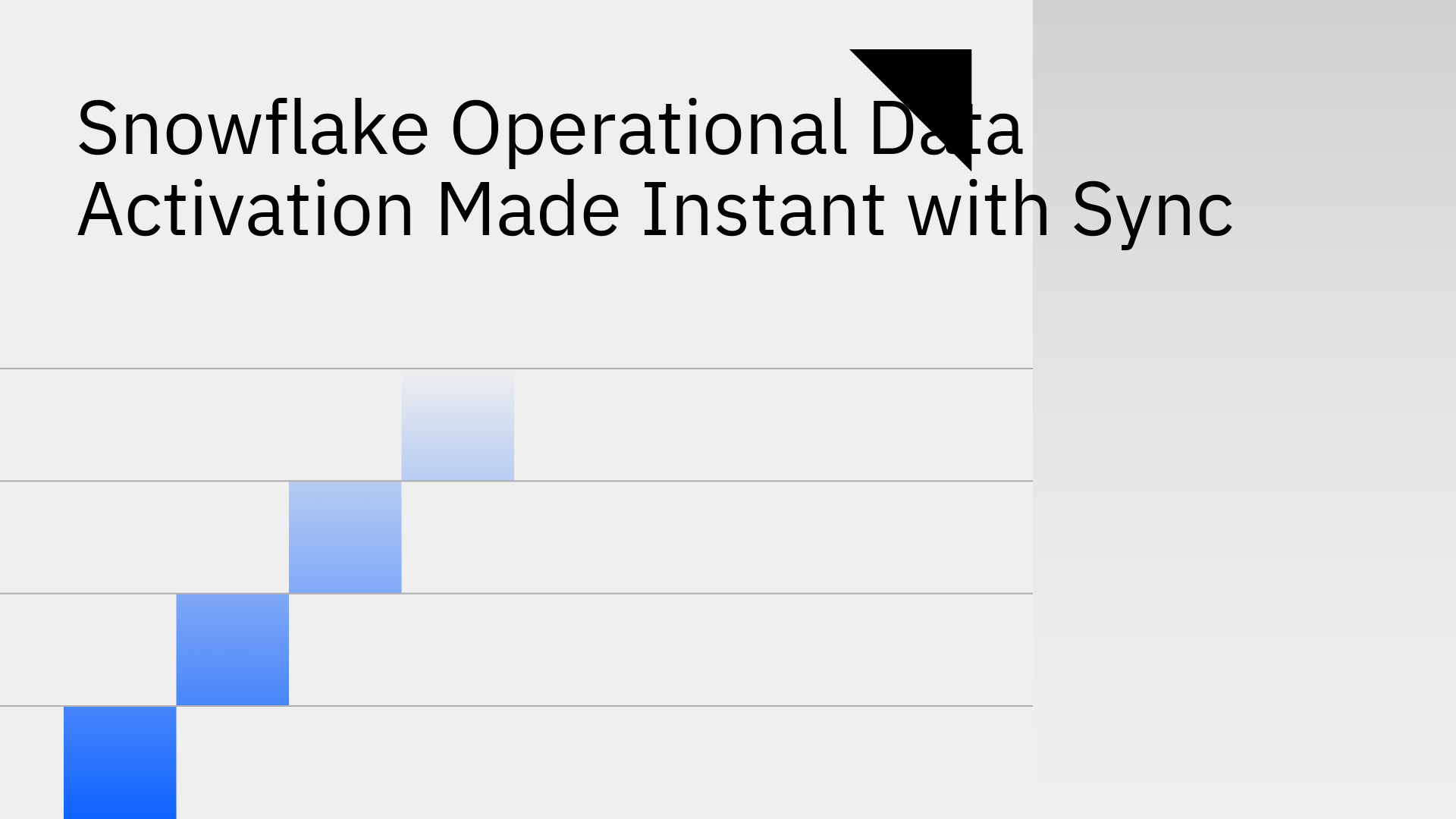
The modern data stack has empowered businesses to consolidate and enrich massive volumes of data within Snowflake, creating a powerful analytical core. However, this valuable data often remains isolated. In fact, many organizations fail to utilize up to 75% of their data, leaving it trapped in warehouses and disconnected from the operational tools where sales, marketing, and support teams execute their daily workflows [1]. This gap introduces critical delays.
The process of moving data from the data warehouse into front-line business applications to drive action is known as snowflake operational data activation. Traditional methods for this, such as batch-based Reverse ETL, are plagued by latency, leading to stale data and missed opportunities. This article demonstrates how a real-time, two-way sync architecture makes Snowflake operational data activation instant, reliable, and effortless.
Operational data activation is the final, crucial mile in the data value chain. It’s the process of transforming analytical insights from Snowflake into actionable intelligence within the SaaS tools that drive business operations [2]. It’s not about generating another dashboard; it’s about putting data to work so teams can make faster, smarter decisions [3]. This involves sending computed metrics like lead scores, customer health indicators, or product usage segments from Snowflake directly into CRMs like Salesforce, marketing automation platforms, and support desks like Zendesk.
The primary benefits of this practice are transformative:
Connecting a data warehouse like Snowflake to your operational systems is the key to unlocking these advantages and creating a truly data-driven organization.
Companies attempting to activate their Snowflake data with legacy methods encounter significant technical and operational friction. These challenges stem from outdated architectural patterns that are ill-suited for the pace of modern business.
Stacksync provides the modern architecture required to overcome the limitations of traditional data activation. By leveraging a real-time, bidirectional synchronization engine, Stacksync enables instant and consistent data flow between Snowflake and your operational systems.
Instant data activation unlocks powerful, proactive workflows across your go-to-market teams.
Scenario: Your data team builds a model in Snowflake that calculates a "Product-Qualified Lead (PQL)" score based on user behavior and firmographics. This score is updated in real-time.
Outcome: With Stacksync, the PQL score and status are instantly synced from Snowflake to your Salesforce or HubSpot instance. A workflow rule can then immediately create a high-priority task for the assigned sales representative the moment a lead crosses the PQL threshold, allowing them to engage while the prospect’s intent is highest.
Scenario: You compute real-time customer segments in Snowflake based on behavioral data, such as identifying users at high risk of churn or those who have just adopted a key feature [4]. Effective data activation requires a unified platform to deliver personalized experiences [5].
Outcome: These segments are pushed instantly to marketing platforms like Marketo. This allows marketers to trigger highly relevant and timely campaigns, such as a retention offer for at-risk users or an upsell campaign for newly engaged power users, precisely at the moment their status changes.
Scenario: You want to provide your support team with a true 360-degree customer view. This involves consolidating data from your production database, billing information from Stripe, and computed health scores from Snowflake.
Outcome: Stacksync syncs this holistic view directly into Zendesk. When a customer submits a ticket, the support agent has complete, real-time context—including their subscription tier, recent activity, and health score—all within their native workspace. This leads to dramatically faster resolution times and a superior customer experience, turning your support team into a proactive, data-informed powerhouse with real-time ETL and reverse ETL.
Instead of a multi-month engineering project, you can launch a production-grade Snowflake data activation pipeline in minutes.
Activating your data is what transforms analytical potential into tangible business outcomes [6]. In today's competitive landscape, acting on insights "soon" is already too late. The advantage belongs to organizations that can close the loop between data and action in real time. This data convergence revolution is powered by closing the gap between analytical and operational systems. Stacksync serves as the critical infrastructure that bridges the gap between Snowflake's immense analytical power and the operational tools that run your business.
Stop waiting for your data. Start activating it instantly with Stacksync.